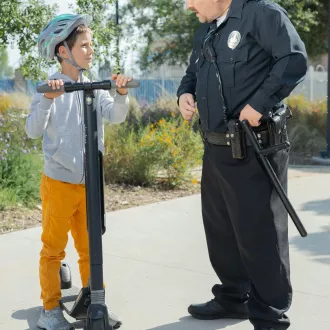Transcription Possible challenges and solutions for children's autonomy
Fostering independence in children has become an important goal for many parents.
This is a vital skill for children's development, as it allows them to become more empowered, responsible and self-sufficient adults. In this guide, we will focus on fostering independence in four key areas: dressing, feeding, personal hygiene and household chores.
We will focus on potential challenges and solutions in promoting independence in the area of dressing. As children get older, it is important to teach them to dress themselves, allowing them to make decisions and develop their personalities. However, the process can present challenges for parents, especially in the first few attempts. In this section, we will explore possible challenges parents may face and offer practical solutions to overcome them.
Possible challenges:
- The child becomes frustrated at not being able to put clothes on correctly.
- The child does not want to dress him/herself.
- Child does not want to wear the clothes offered.
- Child has difficulty tying shoelaces or fastening buttons.
- Parents are in a hurry and prefer to do it themselves.
2 Solutions:
- Patience: It is important to remember that the process of learning to dress oneself is a gradual learning process and that the child needs time and effort. Parents should be patient and provide support and guidance throughout the process.
- Offer choices: Children feel more in control when they have the opportunity to choose. Parents can help children feel responsible by offering reasonable options and allowing the child to choose his or her clothing.
- Break the process into small parts: Instead of trying to teach the whole process of getting dressed, parents can break it into smaller parts and handle them separately. For example, they can teach children to put on their pants first, then their shirt, then their socks.
- Attend to their developmental stage: Children may need help at different times in their lives. Parents should be attentive to their child's abilities and needs, and adjust their level of assistance accordingly.
- Encourage autonomy: Parents should constantly encourage their children to do things for themselves, even if they don't do it well. If children learn that they are capable of doing things on their own, they will feel more secure and have more confidence in themselves.
- Storytelling: Children may be more motivated to dress themselves if they hear stories about other children who have succeeded. Parents can tell success stories of other children or even make up stories together with their child.
- Teach skills step-by-step: Parents can gradually teach skills such as buttoning and sewing, and then allow the child to practice them on their own. This allows them to develop important skills and feel more confident as they go along.
challenges solutions introduction




